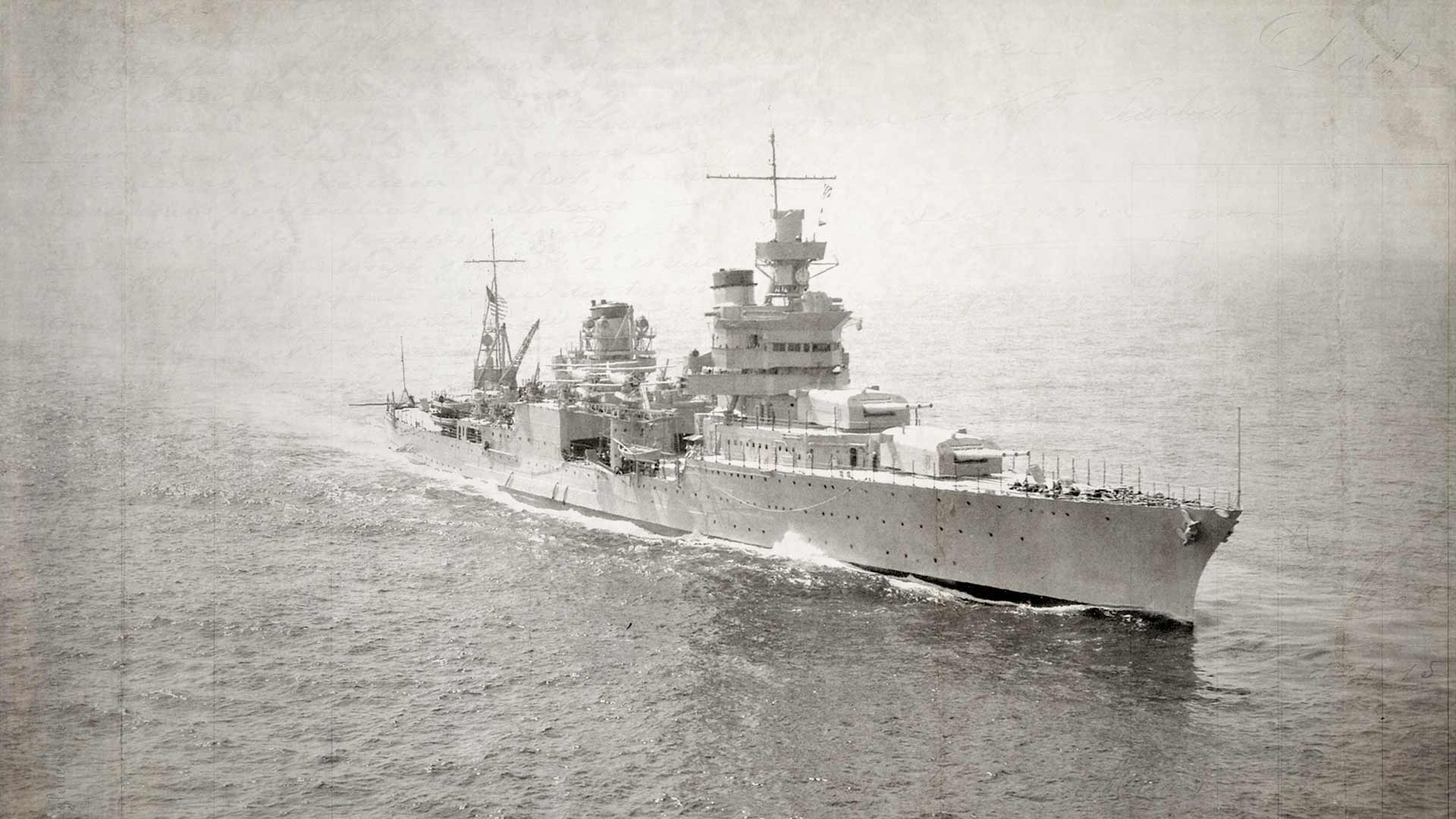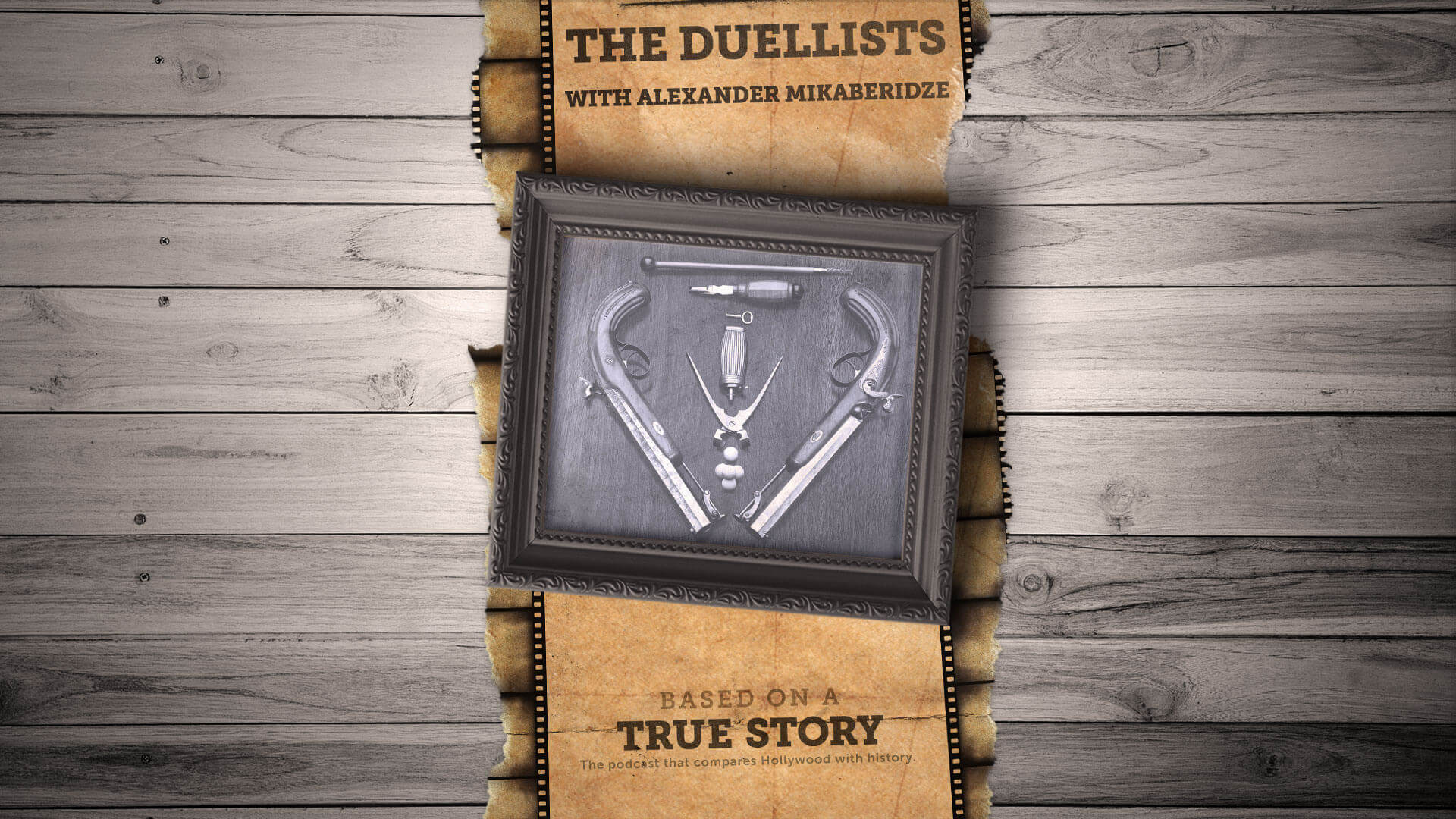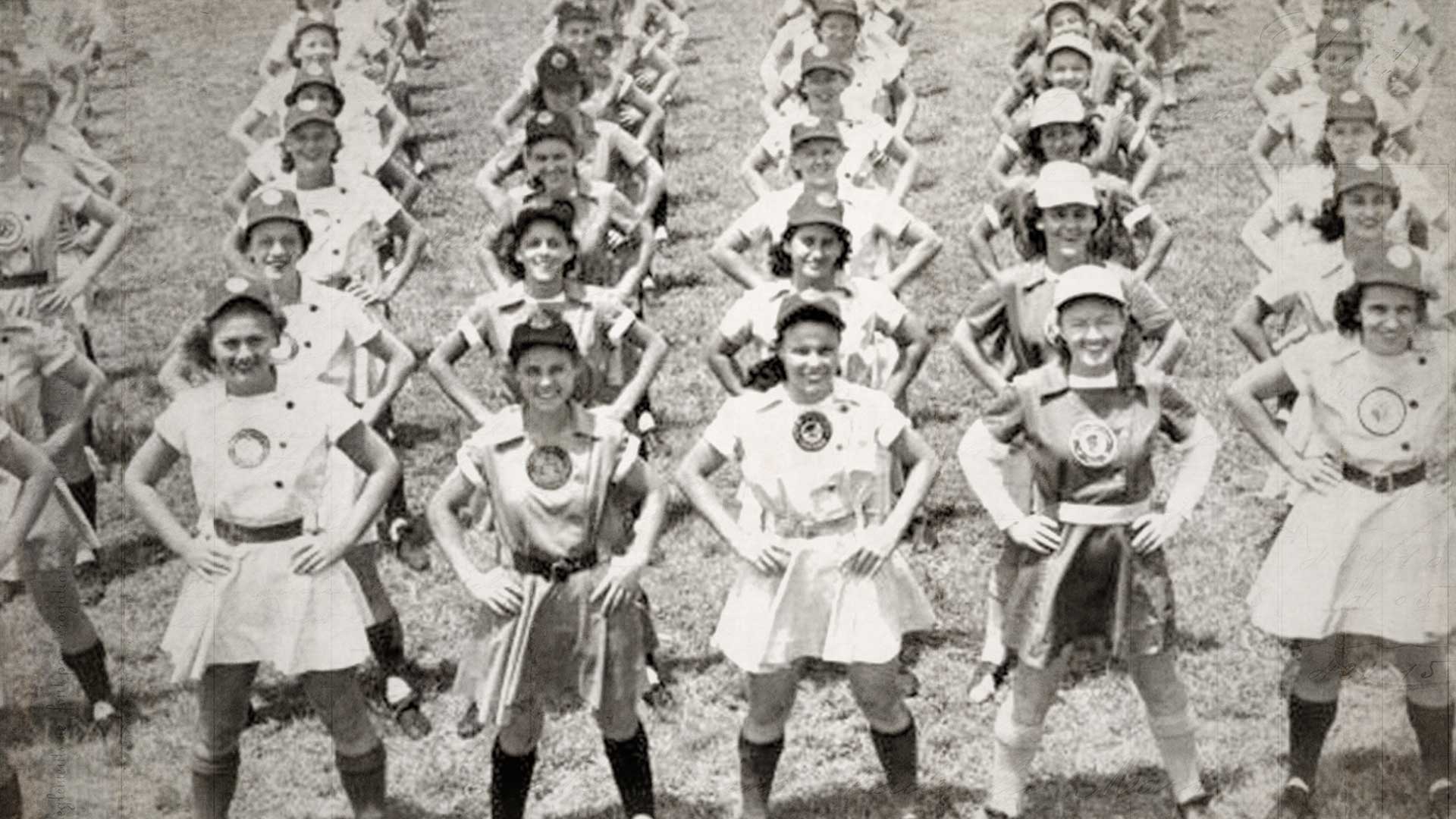For the week between February 13th to February 19th, we’ll be learning about historical events that were depicted in Mata Hari, The St. Valentine’s Day Massacre and Young Guns.
Did you enjoy this episode? Help support the next one!
Disclaimer: Dan LeFebvre and/or Based on a True Story may earn commissions from qualifying purchases through our links on this page.
Transcript
Note: This transcript is automatically generated. There will be mistakes, so please don’t use them for quotes. It is provided for reference use to find things better in the audio.
February 13, 1917. Paris, France.
A well-dressed woman walks down the hospital stairs. It’s a military hospital, or at least there are a lot of soldiers there.
Behind her, a man’s heavy steps seem to worry her. She walks a little faster. He’s still right behind her. She turns to a couple soldiers chatting with each other, telling them the man behind her has been molesting her. They immediately spring to attention, delaying the man to ask him what’s going on.
She uses this as an excuse to slip down and into a cab on the street. She tells the driver to take her to Paris immediately. Just then, she notices someone else is in the car with her.
It’s the head of the French spy bureau, a man named Dubois. He’s played by C. Henry Gordon in the film. He tells the woman that he has a warrant for her arrest, to which she smirks and says he’d better be careful or he’ll have to apologize again.
The woman in this scene is Mata Hari, and she’s played by Greta Garbo in the 1931 film simply called Mata Hari.
This depiction isn’t very accurate to what really happened, but it is true that on February 13th, 1917, the real Mata Hari was arrested.
And the movie is correct to hint at the idea of Mata Hari being arrested prior to this one, although not necessarily by the French like the movie implies. That arrest was in November of 1916 when the Scotland Yard arrested her and took her to London where she eventually admitted to working with the Deuxième Bureau, or the Second Bureau. That was the French intelligence service, kind of like England has Mi6 or the United States has the CIA.
Unknown to her, though, the Second Bureau was suspicious of Mata Hari that she might actually be working for the Germans.
Remember, all of this is happening during World War I.
The next month, in December of 1916, the French allowed Mata Hari to get the name of six spies that they also suspected as being double agents working for the Germans. When the French later decrypted communications from the Germans with those names and other activities that closely matched Mata Hari’s activities, they decided to arrest her.
But the arrest did not happen in the back of a car like we see in the movie.
On February 13th, 1917, Mata Hari was arrested at her hotel room in Paris.
She was put on trial and although the French and British both tried to offer evidence to prove she was a German spy, they didn’t have anything that was damning evidence.
Nevertheless, she was executed by a French firing squad on October 15th, 1917 at the age of 41. Since then, many people have put forward thoughts, opinions, documents, reports, and plenty more to suggest she was a scapegoat and that her lifestyle as an exotic dancer and mistress—while her seductive powers may have helped her as a spy—they didn’t help the intelligence services believe her innocence.
If you want to watch the depiction this week, the arrest happens at about an hour and 14 minutes into the 1931 movie simply called Mata Hari.
And if you want to learn more about the true story, we covered that movie on episode #74 of Based on a True Story.
February 14, 1929. Chicago, Illinois.
The snow is coming down pretty hard outside.
We could see that in the scenes leading up to our event…but now the movie takes us inside a room with brick walls.
This isn’t a room that’s all warm and cozy while it’s snowing outside, no, this is a workshop.
Or perhaps calling it a warehouse or a garage would be better because as the camera changes angles we can see at least two cars, workbenches, and other various tools.
Two cops burst into the room with guns drawn.
We can also see there are multiple men in the room, not just the one man who was by the door when the cops came in. Although the movie makes it hard to tell exactly how many men there are in the room, but we can tell they’re all wearing the same overcoats they’d wear outside on a cold day like today.
Most of them are wearing the kind of hats you’d expect gangsters in the 1920s to be wearing.
The two cops with guns drawn order everyone in the room to line up against one of the walls.
The men talk back to the cops, but they begrudgingly do as they’re told.
Then one of the cops notices another guy on one of the cars. He tries to tell the cop he’s just a mechanic who works the cars there, he doesn’t have anything to do with the people here. The cop doesn’t care. He grabs the mechanic by the collar and pushes him to the wall with the rest of the men lined up.
Now we can see seven men, including the mechanic, lined up against the wall.
The cops tell the men to place their hands on the wall and lean on it.
Again, the seven men are reluctant but they do as they’re told.
One of the cops keeps his gun on the men while the other cop goes one-by-one to pat down the men leaning on the wall. One of them has a handgun, so the cop takes it. Another it looks like maybe he’s taking another handgun, or maybe it’s his wallet, the movements are too fast to really tell for sure.
As he nears the last guy, we can see the other cop in the room making his way to the door. He opens it and waves in two other men. These aren’t cops, or at least they’re not dressed in a uniform. They’re wearing long overcoats and hats like the men up against the wall. And the two men are carrying huge submachine guns with the round drum magazine.
The men are still facing the wall so they can’t see the men who just entered.
The cops put away their handguns and pull out shotguns, keeping them pointed at the men lined up against the wall.
Seven men in dark overcoats leaning up against the wall with both hands so they’re facing the wall. Behind them in the room are the now four men, two cops with shotguns and two other men with machine guns.
The four men look at each other.
Then, they all open fire. They keep shooting even after all the men are slumped over on the ground. It’s obvious they want to make sure no one is left alive.
This depiction comes from a movie released in 1967 that was named after the event we just heard described: The St. Valentine’s Day Massacre.
And while it is true that the event really did happen, the movie has its own dramatic license to fill in holes. The reason for that is simply because we don’t know the full story of exactly what happened inside that Lincoln Park neighborhood garage on Clark Street at 10:30 AM on February 14th, 1929.
You see, the true story of what we now know as the St. Valentine’s Day Massacre is something that involves organized crime and gangs. More specifically, the Chicago mob led by Al Capone.
Since there’s organized crime involved, we simply don’t know everything about it and we probably won’t ever know the entire story.
For a little historical context, this was during Prohibition so liquor was illegal in the United States. Organized crime leaders in cities like Chicago were making a lot of money off importing alcohol and one of those was the Chicago Outfit, a crime syndicate led by Al Capone.
So even though we don’t know for sure if it was Al Capone who ordered the hit, most people assumed he was behind it because the victims were all a part of Bug Moran’s North Side Gang. They was a rival to Al Capone’s gang.
As the story goes, the North Side Gang had supposedly hijacked some of the Chicago Outfit’s whiskey. The massacre was retaliation as well as an attempt at killing Bugs Moran, the leader of the North Side Gang.
However, Bugs was running late.
We didn’t cover this in the depiction we just heard from the movie, but the movie does show a scene where three men are walking to the building when they see the cops pull up. They turn around to get some coffee.
That happened, too, when Bugs Moran saw a police car near the building they instead turned around and went to a nearby coffee shop.
And the movie also got some other things correct about the massacre, like how many people were involved.
From the police investigation into the evidence left behind and eyewitness accounts, we know there were four men who carried out the massacre. Just like we see in the movie, two of them were dressed as police officers—although we don’t really know if they were real police officers or not. Some have suggested the Chicago police were actually involved in retaliation for an officer’s child being killed earlier.
But we don’t know if that’s true or not.
We do know that the four men used two shotguns and two Thompson submachine guns just like we see in the movie, though. And they did keep shooting even after the seven men fell to the ground, but surprisingly one of the men survived.
That was an enforcer in the North Side Gang, Frank Gusenberg, but he refused to identify his killers before he died three hours later.
Oh—and in the movie, we see a dog in the room with them, and since Frank died a few hours later that left Highball, that was the dog’s name, as the only survivor of the massacre.
And I guess the wall itself, too.
You can see the blood-stained wall at the Mob Museum in Las Vegas, Nevada.
If you want to watch the event this week, check out the 1967 movie called The St. Valentine’s Day Massacre. The policemen burst into the room at the end of the movie around an hour and 27 minutes.
February 18, 1878. New Mexico.
It’s an overcast morning out in the open country.
The sun isn’t fully up yet, but in the dark of the morning, we can still make out seven figures making their way down the road. Six are on horseback, riding along with a man in a horse-drawn cart.
As they come over a slight hill, one of the men on horseback obviously notices something up ahead. Guns pulled, they’re on high alert now. They ride ahead of the man on the cart to check out a small grove of trees.
Then, more men on horseback appear from behind the man in the cart who is now alone on the horizon.
The camera focuses in on a close shot of Emilio Estevez’s character, William H. Bonney, as he notices the new men arriving behind the man in the cart. Then, there’s a brief closeup of the man in the cart…it’s Terence Stamps’ character, John Tunstall.
From afar, we can see the men fire on Tunstall, killing him in cold blood.
Then, the men who killed Tunstall chase after the six men on horseback, who are forced to run away.
This depiction from 1988’s Young Guns happened this week in history, on February 18th, 1878, but it didn’t happen the way we see it in the movie.
There were seven men in the true story, but they weren’t just riding along the road. They were driving horses from Tunstall’s ranch.
The Lincoln Sheriff had organized a posse to connect Tunstall’s cattle onto a warrant against one of his business partners. But when the posse got to Tunstall’s ranch, they found he wasn’t there. His horses weren’t there either, so they tried to find him.
They caught up with them and the seven men were spread out quite a ways as they were driving the horses. Three of the deputies confronted Tunstall and, well, only the three deputies came out of it alive.
We don’t know the specifics of the confrontation. Was Tunstall being defiant? Did he surrender? Did the deputies fire upon him unprovoked like we see in the movie? We don’t know. What we do know is that Tunstall was shot twice, once in his chest and another in his head. He died instantly less than three weeks before his 25th birthday.
After his death, William Bonney would take up his own path to bring Tunstall’s killers to justice. Since they were lawmen, though, that proved to be easier said than done. Tunstall’s death was the start of what we now know as the Lincoln County war and led to Bonney leading a group of men called The Regulators as he took on his own nickname: Billy the Kid.
If you want to watch the event this week, it’s at about 23 minutes into the 1988 movie Young Guns.
And if you want to take a deeper dive into the true story, check out episode #146 of Based on a True Story where we cover the Young Guns movie!
Share this:
- Click to share on Twitter (Opens in new window)
- Click to share on Facebook (Opens in new window)
- Click to share on Reddit (Opens in new window)
- Click to share on Pocket (Opens in new window)
- Click to share on LinkedIn (Opens in new window)
- Click to share on WhatsApp (Opens in new window)
- Click to share on Telegram (Opens in new window)
- Click to email a link to a friend (Opens in new window)
- Click to print (Opens in new window)



